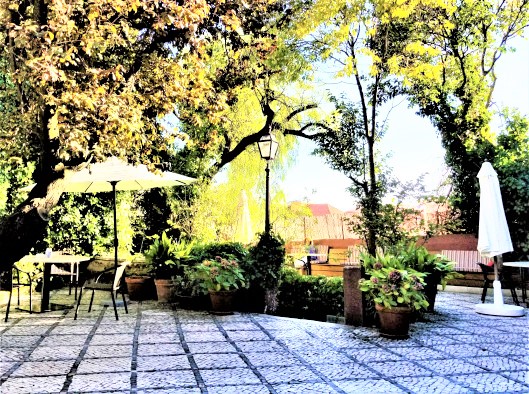
Grove Koger
Among our happiest discoveries on our 2017 visit to Portugal were the wonderful little pastries known as pastéis de nata. We know now that they’re widely recognized as a Portuguese delicacy, but somehow we had learned nothing about them beforehand, despite having done quite a bit of research.
The name pastel de nata (that’s the singular) translates into English as “pastry of cream,” and while the little tarts aren’t much more complex than that—besides cream or milk, the custard filling includes sugar, a bit of cinnamon, and egg yolks of course—the phrase doesn’t do them justice. They’re a breakfast staple, but they’re just as good a treat later in the day, in the unlikely event that the local bakery happens to have any left.
The Portuguese seem to have derived their taste for rich pastries from the Moors, who brought recipes for sweet, egg-rich desserts with them when they invaded the Iberian Peninsula centuries ago. The pastéis themselves may have originated during the seventeenth and eighteenth centuries in convents and monasteries, institutions that raised chickens in order to supply the eggs used in clarifying wine. Or were they using the whites to starch their laundry? In either case, there was a constant surplus of yolks. Fortunately, the members of the orders found a good use for them.

Those in the know hail the version known as pastéis de Belém as the Holy Grail of Portuguese sweets. They were created by the nuns of the Mosteiro dos Jerónimos in Lisbon’s Belém district in the early nineteenth century, and today are baked only in the shop that bears the pastries’ name. Their exact recipe is a closely guarded secret, and the few who know it have sworn never to write it down. The lucky diners who’ve tasted them, however, confirm that they’re superior to the de nata variety. Sadly enough, Maggie and I didn’t make it to Belém; Lisbon is a big, complex metropolis that would repay weeks of exploration. Next time …
We did, however, visit the small city of Évora (east-southeast of Lisbon), where we sampled a similar pastry known as queijadas de requeijão de Évora. They’re a little larger and made with sheep’s cheese, usually the variety known as requeijã. They were good, but not, I’m afraid to say, a match for Lisbon’s pastéis.
□□□
As you can see from the image at the top of today’s image (a photograph by Carolina P. reproduced courtesy of Needpix.com), pastéis are as visually appealing as they are tasty. The second image is a photograph of the courtyard of our hotel in Lisbon, the wonderful York House, a converted Carmelite convent dating from 1606. It was here that we had our fill of pastéis every morning.
I should also note that in Portuguese, a final s is pronounced sh. Therefore, pahs-tay-ish.
A vivid description of the delicious pastry!
LikeLike
Thank you!
LikeLike